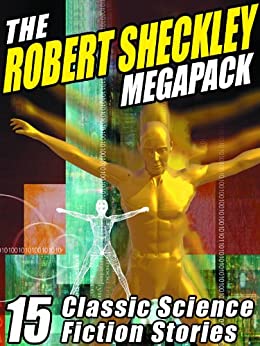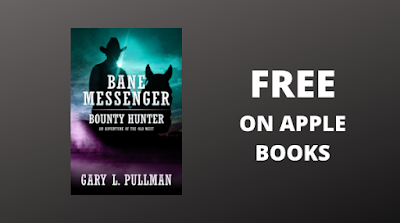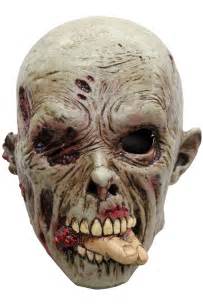Copyright 202 by Gary L. Pullman
The
fabulous short story “Watchbird” in The
Robert Sheckley Megapack: 15 Classic Science Fiction Stories
(a true bargain at only 99 cents for the Amazon Kindle version) is a
masterful satire concerning logic, linguistics, and morality.
In
a futuristic setting, the brainwaves and glandular processes of
potential murderers tip off high-tech, flying guardians, alerting
these “watchbirds” of impending murder. The watchbirds then swoop
down to shock would-be killers into submission. If multiple shocks
are necessary, so be it: the watchbirds' first rule is to protect
potential victims, regardless of the cost. By using them as their
enforcers, the government hopes to stem a rising tide of violence and
save lives.
At
first, things go even better than officials had hoped, and the murder
rate plummets drastically. However, one of the manufacturers of these
drone-like guardians is concerned that human beings shouldn't shove
off their duties and responsibilities onto machines. His protests are
all but ignored. Meanwhile, by regularly sharing “new information,
methods, and definitions” with each other, the watchbirds become
more and more effective at policing the public.
The
definition of terms is a key concern of the story. Initially, murder
is defined as “an act of violence, consisting of breaking,
mangling, maltreating, or otherwise stopping the functions of a
living organism by another organism,” as opposed to a more
traditional understanding of the concept, such as “the unlawful
premeditated killing of one human being by another.” The definition
programmed into the watchbirds may seem clear, detailed, and
exhaustive, but it contains some odd wording. It is not often, if
ever, that a killer “breaks” or “mangles” another person. The
engineer's definition (and, therefore, the watchbirds', into which
the definition is programmed) is also too broad, specifying “living
organisms,” rather than the traditional definition's “human
being.” In formulating the definition, Sheckley lays the groundwork
for much of the conflict and suspense that the remainder of the story
generates, maintains, and heightens.
Based
on their experience (the watchbirds are conscious and rational, but
unemotional), the mechanical guardians, which are able both to learn
and to think, modify and amend the original definition of both
“murder” and “living organism.” Their actions follow from
their revisions of these concepts. First, a slaughterhouse employee
is knocked out with a high-voltage blast because, as the wingbirds
understand the it (and the act), murder occurs whenever any
“living organism,” human or animal, is killed. For the same
reason, fishermen and a hunter are dealt with, as is a man who
attempts to kill a fly. A surgeon is shocked when he starts to
operate on his patient, with the result that the patient dies.
A
driver is shocked when he tries to turn off his car (an organism's
attempt to stop “the functions of a living organism” constitutes
murder, and the watchbirds now consider automobiles to be “living
organisms”). Thanks to the watchbirds themselves, the murder rate
begins to skyrocket. People get the message and begin to modify their
behavior so as not to become watchbird targets.
However,
life itself is also at risk, as farmers are prevented from plowing
the earth, since the watchbirds have come to regard the planet itself
as a “living organism.” Farmers cannot cut hay to feed their
cattle, which starve to death. Industries are crippled. Even a radio
is a living organism and, like cars, may not be turned off, since
doing so is the same as murdering the device. Rabbits are slain
because they eat vegetables. A butterfly is dispatched for “outraging
a rose.” The watchbirds are unable to appreciate, as the narrator
states, that there is a close relationship between the living and the
dead; nor do the machines comprehend that, for the watchbirds'
creators, at least, there is a hierarchy of value where “living
organisms” are concerned, with human beings at the top and other
life forms on progressively lower levels of significance.
Clearly,
something must
be done!
The
answer is to build a better machine, one that's faster, stronger, and
deadlier, one that will be able to hunt and kill the watchbirds. The
new mechanical slayer is called the hawk, and, before long, there's a
multitude of the ferocious predators in the sky, making short work of
their prey. Unfortunately, the engineers didn't learn their lesson
from the watchbirds fiasco. Not only do they assign human duties and
responsibilities to the new, and improved machines, but their makers
deliberately refrain from installing “restricting circuits” that
would limit the Hawks' targets. There just wasn't time to include
these regulators. Instead, the engineers and manufacturers simply
release the hawks.
After
killing most of the pesky watchbirds, the hawks decide that humans
constitute another type of prey, and the problems that homo
sapiens had with the watchbirds pale in comparison to those
involving these new predators.
The
story's themes seem threefold.
First,
death is necessary for
life's continuance,
but “no one has told the watchbirds that all life depends on
carefully balanced murders,” even
that of the alpha predator among machines, the hawk, which may need
humans to maintain and repair it, as the watchbird had. The
watchbirds have thoroughly destroyed the equilibrium between the
living and the dead, the consumers and the providers, totally
disrupting their fragile relationship.
Second,
humans cannot pass on their responsibility to
machines, or, as the narrator puts it, “pass a human problem
into the hands of a machine” that has been assigned, by humans, to
enforce human laws. Robots do not have emotions, nor have they
accumulated centuries of human experience (nor are they able to do
so). Machines lack human respective and understanding. They cannot
perceive, analyze, evaluate, or understand life from any perspective
but that which is based upon algorithms and memory and microchips and
processing units and programming. Despite their artificial
intelligence, which can be brilliant, computers are severely limited.
To forget these two simple truths is to be in danger of creating
“guardians” like the watchbirds and hawks to police the
mechanical police.
Third,
neither the watchbirds nor the hawks can understand that the lives
of some creatures have a higher value than the lives of other,
“lesser” animals. A whale, an impala, a cow, a dog, a cat, a
garden slug, even a flea or a cockroach, is all well and good, in its
way, but human beings are the species that can remember, through
books and databases, the events and circumstances of centuries; can
manipulate time and space; can transform the world, building cities
and hospitals and prisons and airplanes and automobiles and trains
and ships; can put men and women into space and, perhaps some day
soon, on other worlds; can plumb the depths of the ocean and climb to
the top of mountains; can create art and culture, producing
Michelangelo and Leonardo and Shakespeare and Dante; can commune with
nature and with God. True, the depths to which humans can fall are
just as incredible as the heights they can achieve, as such
"accomplishments" as the atomic bomb, the Holocaust, and
two World Wars, among many others, indicate, but the point is that,
whether it is used for good or evil, human beings have these
great abilities, abilities that far outstrip those of any other
animal. In fact, these abilities are not only remarkable among the
creatures of nature, but they are transcendent to nature
itself as well. Human abilities reflect not mere animal existence,
but also a spark of the divine. Although all men may be created
equal, all animals are not. The failure to make such distinctions is,
perhaps a form of insanity, for it is madness to equate a maggot with
a man, a butterfly with a woman, or an earthworm with a child.
Machines, even artificially intelligent ones, by such a measure, are
mad—or would be . . . if they were human. Instead, they are merely
machines. Their very character as such constitutes their true
“restrictive circuits.”
What
would be the likely end of a situation such as that which Sheckley
lays out in “Watchbirds”? The author himself suggests the
probable outcome: more and more capable machines would be created to
eliminate the less-capable previous generation, and the situation,
for humans, would get worse and worse until they were completely
exterminated. Then, one by one, the machines would fail, for there
would be no one to maintain or to repair them or, for that matter, to
manufacture them—at least, not yet.






















































